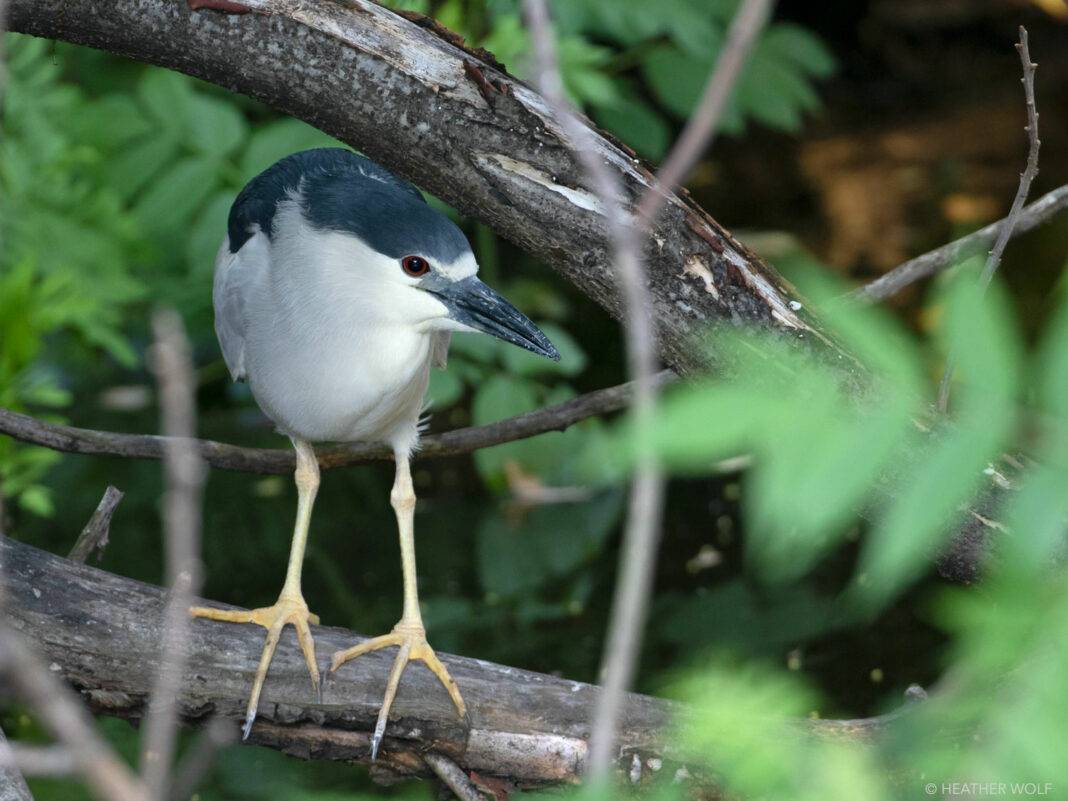Today, Brooklyn Bird Watch features a Heather Wolf photo of a Black-crowned Night-Heron seen in Brooklyn Bridge Park.
Several physical characteristics set the Black Crowned Night Heron apart from the more familiar long legged herons with elegant necks like the Great Blue Heron and the Little Blue Heron. And as its name indicates, the Night Heron is more active at night, spending most of the daytime perched in trees and hidden in the foliage.
They are social birds and roosts together in colonies, building stick nests in wetland areas. There can be as many as twelve nests in one tree. They will even nest with other species, including herons, egrets, and ibises. They also happen to be, according to the Smithsonian, the most widespread heron species in the world.
Although their short necks and short legs are more bulky looking than the elegant herons, Night Herons have some striking features like their gray and black plumage, long white head plumes, and round red eyes.
The scientific name means “night raven,” deriving from the ancient Greek “night,” and korax, “raven.” As the name indicates of course, they prefer to hunt at night, standing motionless in shallow water waiting to ambush their prey. Night Herons are also one of a few birds that “bait fish” by dropping something edible, or a non-edible buoyant object, into the water within its strike zone. Primarily they eat small fish, crustaceans, frogs, aquatic insects, small mammals and small birds.
Yet, the Night Heron is also known for some inexplicable behavior. According to the Cornell Lab of Ornithology, scientists find it easy, if a bit smelly and messy, to study the diet of young Black Crowned Night Herons — the nestlings often disgorge their stomach contents when approached.
A breeding Black Crowned Night Heron will brood any chick that is placed in its nest. The herons apparently don’t distinguish between their own offspring and nestlings from other parents.
The females lay three to five eggs and both parents incubate the eggs for about 25 days. Both parents feed the chicks by placing partially digested food into their mouths. After the chicks hatch, for about 10 days they cannot control their body temperature so one of the parents must keep them warm at all times.
The young Night Herons leave the nest at the age of 1 month, but cannot fly until they are 6 weeks old. They will follow their parents around to learn how to forage for another few weeks, moving through the vegetation on foot, before beginning to fly away from the nesting site.


